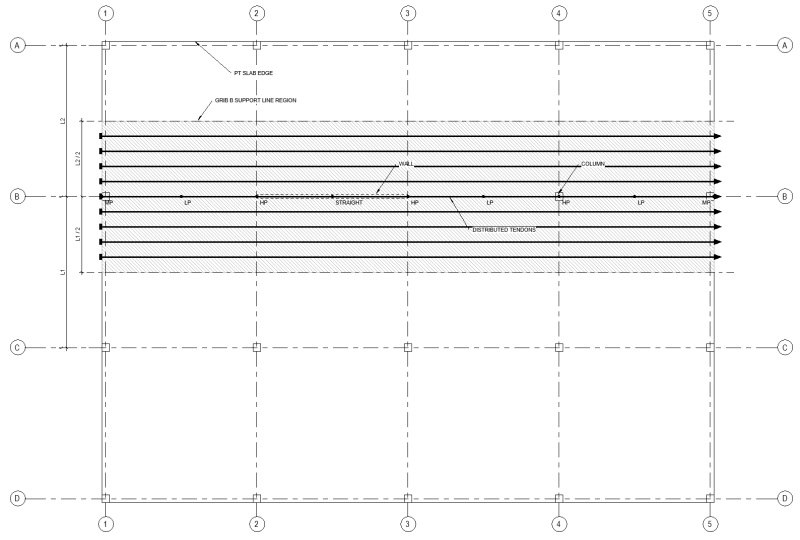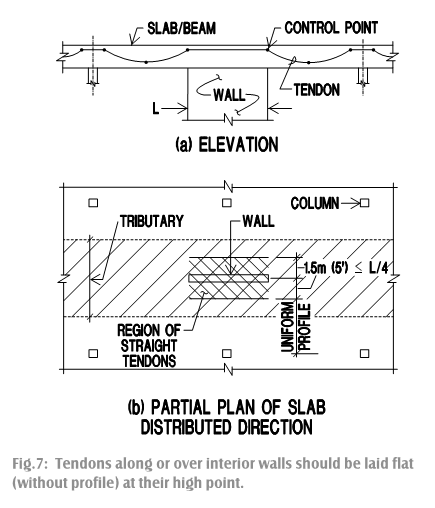I'm wondering what the standard practice is for setting the drapes on distributed PT tendons that run parallel to a load bearing wall in a two-way elevated PT slab. See snip below for example. Let's say I have my distributed tendons running east-west on the plan shown. At the tendons associated with the support line at grid B, would you run all distributed tendons in that shaded area as straight along that wall from grids 2-to-3? Would you disregard the wall and treat your distributed tendons more like joists that are spanning to the banded tendons that will occur at grids 2 and 3; in which case you will drape the distributed tendons between grids 2 and 3? Or would you do something in between (using straight tendons for the ones closest to the wall, and using draped tendons for the ones further from the wall and before you get to the edge of the hatched region)?




![[dazed] [dazed] [dazed]](/data/assets/smilies/dazed.gif) I don't feel it serves much of a purpose being draped, and flat is the "default" in my mind. Gut instinct tells me it makes little to no difference what the tendon is doing when running along a wall of significant length, the presence of the wall itself will be what largely dictates the net outcome.
I don't feel it serves much of a purpose being draped, and flat is the "default" in my mind. Gut instinct tells me it makes little to no difference what the tendon is doing when running along a wall of significant length, the presence of the wall itself will be what largely dictates the net outcome.